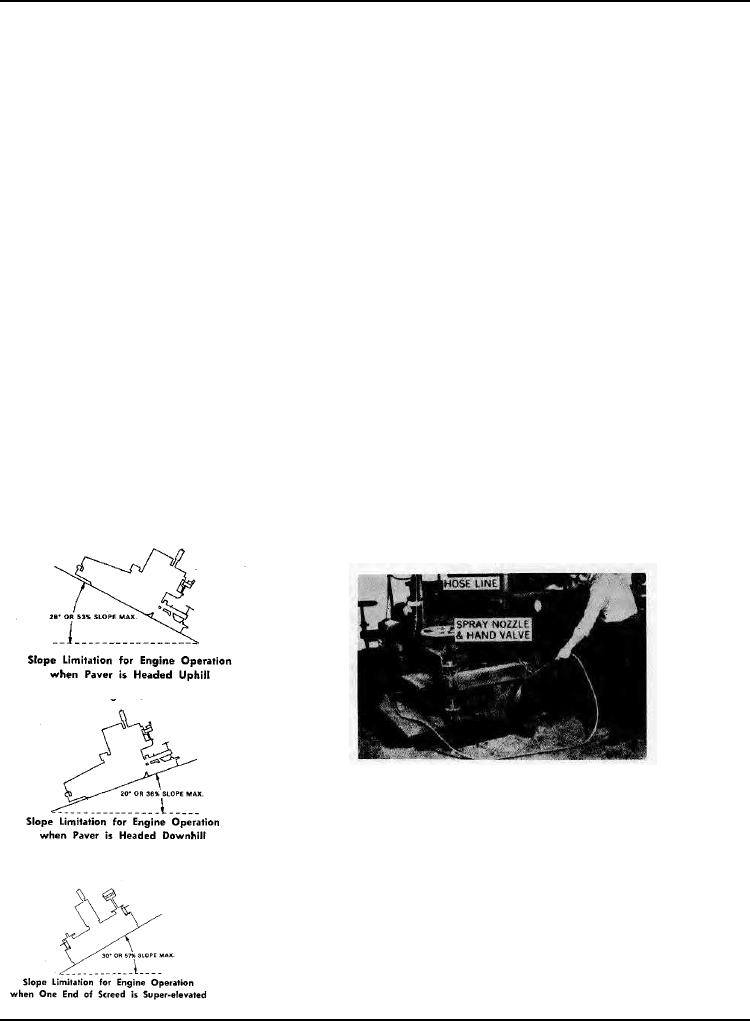
STOPPING PAVER
A paver is normally stopped by moving both Track Switches to the OFF (center) position. If an emergency
stop is required, move both track switches all the way forward to BRAKE position. CAUTION! An operator
should be braced for sudden stoppage if brakes are applied when the paver is moving at top speed.
PARKING AND HAULING PAVER - IMPORTANT!
When a paver is to be parked on any degree of slope, both tracks should be adequately blocked at the
downhill end to prevent downhill movement! The electric brakes should not be used as parking brakes!
When a paver is loaded for transport, regardless of distance to be moved, both tracks must be blocked
adequately at each end, or the paver chained down to prevent it from rolling. Do not rely upon the electric
brakes to hold a paver during transit.
ANGULARITY RESTRICTIONS
The constant need for proper engine lubrication makes it necessary to restrict the slope at which the paver
may operate. These restrictions which are imposed by the engine manufacturers are as follows:
1. Paving Uphill (See Figure 6) - Do not exceed a 53% slope (28).
2. Paving Downhill (See Figure 7) - Do not exceed a 36%o slope (20).
3. Paving With One End of Screed Elevated (See Figure 8) - Do not exceed a 57% slope (30).
NOTE: The angularity shown represents the engine operating restriction only! If a paver is to operate
near this slope limitation some satisfactory method of holding the paver on the slope must be devised by
the owner.
CLEANING PAVER
It is important that the paver be thoroughly cleaned at the end of each day's operation. A long spray
nozzle hose is attached to the heater fuel oil supply valve and will reach any part of the paver for spray
cleaning and lubricating. (See Figure 9. Refer to Maintenance Section for details.) Every time the paver is
cleaned, the tracks should be sprayed with fuel oil. There is enough lubricant in the fuel oil to keep the track
pins from rusting and binding.
TIGHTENING NEW TRACKS
IMPORTANT ! A new paver or one having a new set of tracks will require daily tightening of the tracks
until all link pins have "worn in" and stretching of the track no longer occurs. When this initial stretching
stops it will only be necessary to check and tighten the tracks occasionally. (See Section 11)
Figure 6
Figure 7
Cleaning paver with Screed Heater Fuel Spray Accessory
Figure 9
Figure 8
Page 76

